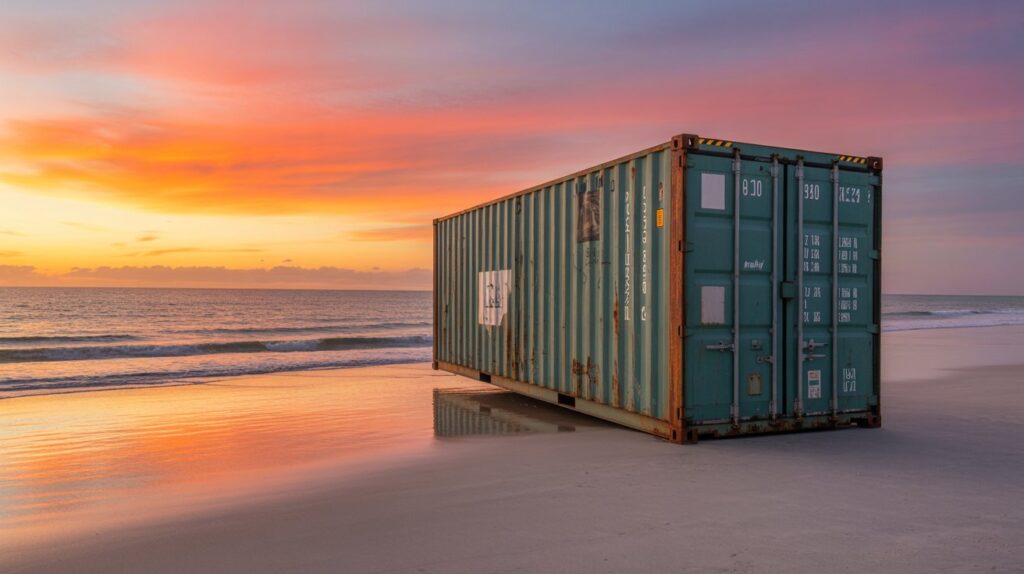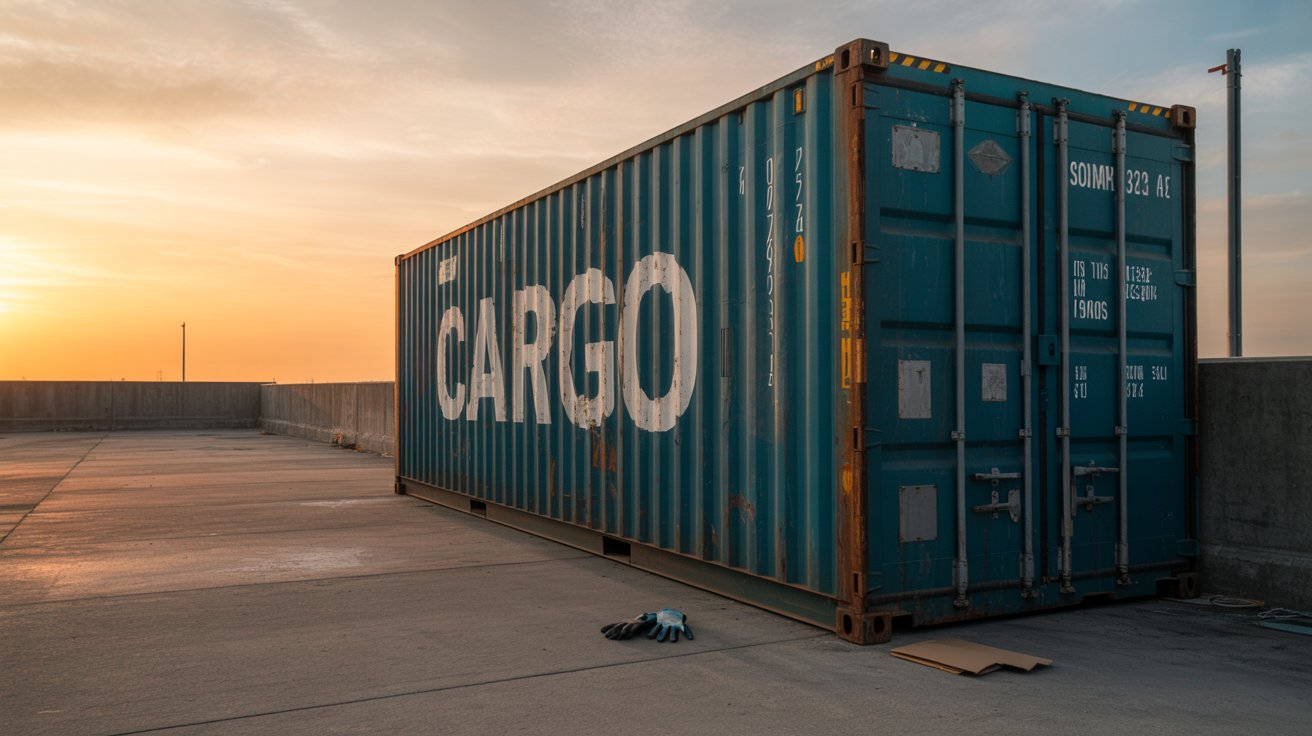Have you ever stopped to consider how shipping containers impact the environment? With the global reliance on shipping for transporting goods, these steel compartments play a significant role in our economy and daily lives. But their environmental footprint is less discussed, and it’s a conversation worth having. Let’s look into the world of shipping containers and their environmental implications, keeping it friendly and conversational as we delve into this complex topic.

What Are Shipping Containers?
Shipping containers are large, standardized steel boxes designed to be transported via road, rail, and sea. They come in various sizes, but the most common is the 20-foot and 40-foot container. These containers are designed to withstand harsh weather conditions and are used to transport all kinds of goods, from electronics to clothing.
The Evolution of Shipping Containers
Shipping containers have been around since the mid-20th century, revolutionizing the logistics industry. Originally, they aimed to improve the efficiency of transporting goods, and they did just that. By allowing goods to be packed and transported in bulk, shipping containers reduced the time and cost of loading and unloading ships, while also improving security and reducing the risk of damage.
Types of Shipping Containers
While the standard container is the most commonly used, there are several specialized types, including high-cube containers, refrigerated containers (reefers), and open-top containers, each serving unique purposes. This specialization allows for diverse goods to be shipped across the globe safely and efficiently.
The Positive Environmental Effects of Shipping Containers
It might surprise you, but shipping containers provide several environmental benefits despite their steel-clad nature. Understanding these positives helps create a balanced view of their overall impact.
Efficient Use of Space and Fuel
Containers allow for the transport of large quantities of goods at once, maximizing the efficiency of cargo ships. This bulk transportation leads to fewer ships required for transporting goods worldwide, which, in turn, reduces fuel consumption and emissions per unit of cargo.
Promoting the Circular Economy
Upcycling shipping containers is a growing trend, where they are repurposed into homes, offices, or pop-up shops. This movement supports the circular economy by reusing materials that might otherwise end up in landfills and extends the life cycle of the containers significantly.
Reduction in Packaging Materials
Shipping containers offer secure transport, reducing the need for excessive packaging material to protect goods. Ultimately, this can contribute to less waste, helping reduce solid waste pollution.
Environmental Challenges of Shipping Containers
While containers have some benefits, it’s important to also examine the environmental challenges they present. Like any industrial process, the manufacturers and users of shipping containers need to address specific environmental concerns.
Material and Energy Use in Manufacturing
The production of shipping containers involves considerable energy consumption and the extraction of raw materials, such as iron ore for steel manufacturing. This can lead to significant greenhouse gas emissions and other environmental impacts.
Container Disposal and Waste
After their 10-15 year lifespan, the disposal of shipping containers can pose environmental concerns. While many containers are recycled or upcycled, others may end up abandoned, creating scrap metal waste if not properly managed.
Transport Emissions
While container shipping is more efficient than other transport methods, it still contributes significantly to greenhouse gas emissions. As larger ships powered by fossil fuels contribute to air pollution, the industry faces challenges in mitigating these impacts.
Steps Toward a More Sustainable Future
Acknowledging the environmental impacts of shipping containers is only part of the journey. To create a sustainable future, stakeholders must adopt practices that minimize harm and promote positive environmental contributions.
Innovations in Container Design
New designs and materials, such as the use of lightweight composites or sustainable materials, are being explored to improve the environmental performance of containers. These innovations could reduce the energy used in manufacturing and operation phases.
Cleaner Fuel Alternatives
The shipping industry is increasingly turning to cleaner and renewable fuel alternatives to reduce carbon emissions. Fuels such as liquefied natural gas (LNG) and biofuels provide opportunities to decrease the environmental footprint of container shipping.
Regulations and Industry Standards
Governments and international organizations are establishing stricter regulations to push the shipping industry toward sustainability. These regulations drive innovation in cleaner technologies and encourage better fuel and waste management practices.

Reusing and Repurposing Containers
One of the most significant environmental opportunities with shipping containers lies in their versatility for re-use in various applications, enhancing their life span dramatically.
Shipping Containers as Architecture
In recent years, there has been a surge in using shipping containers in architecture. They are repurposed into affordable housing, office spaces, and event venues, giving these robust structures a second life while reducing the demand for conventional building materials.
Pop-Up Solutions
Temporary pop-up shops and cafes made from shipping containers have become popular due to their modular and mobile nature. This trend is not only eco-friendly but also introduces flexibility and creativity in urban space utilization.
Emergency and Temporary Housing
Their durability makes shipping containers ideal for emergency housing solutions in disaster-stricken areas. They provide immediate shelter quickly and efficiently, demonstrating their value beyond mere goods transportation.
Conclusion
In contemplating whether shipping containers are environmentally friendly, it’s important to weigh both their benefits and challenges. Shipping containers present unique opportunities and challenges for environmental sustainability. While they offer efficient transport and reuse potential, there’s still a need for innovation and regulation to minimize their environmental impact. By balancing these factors, individuals and industry professionals can make informed choices that benefit both the economy and the environment.
Your awareness and curiosity about the elements of shipping containers’ environmental footprint are essential as we move towards a sustainable future. Through informed decisions and innovative solutions, the shipping industry and its containers can continue to evolve in a way that harmonizes economic necessity with environmental stewardship.

